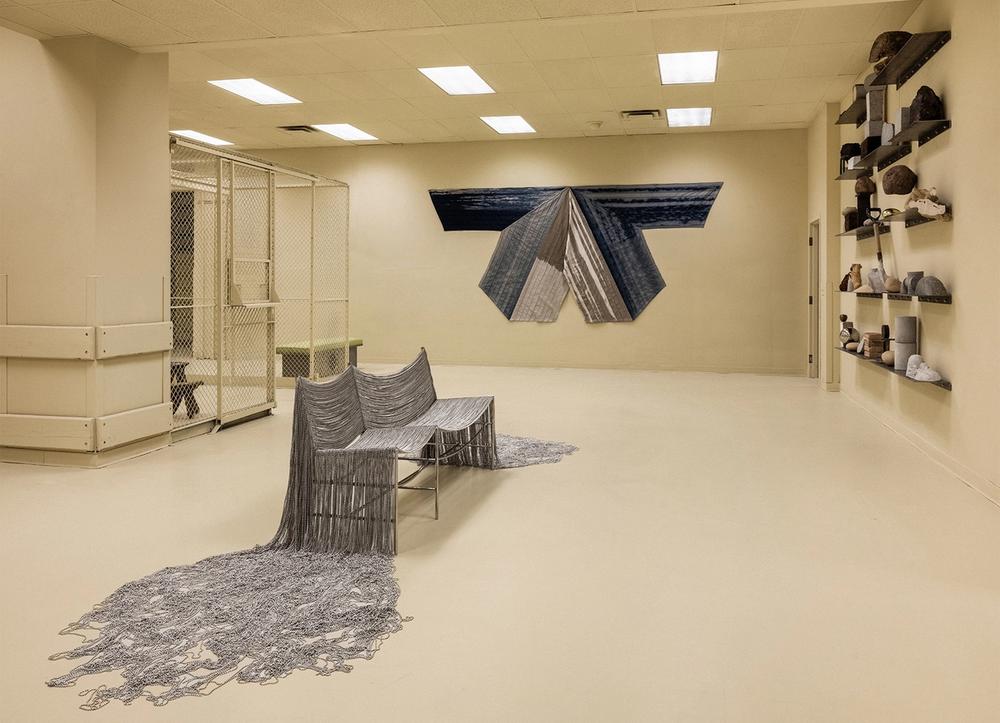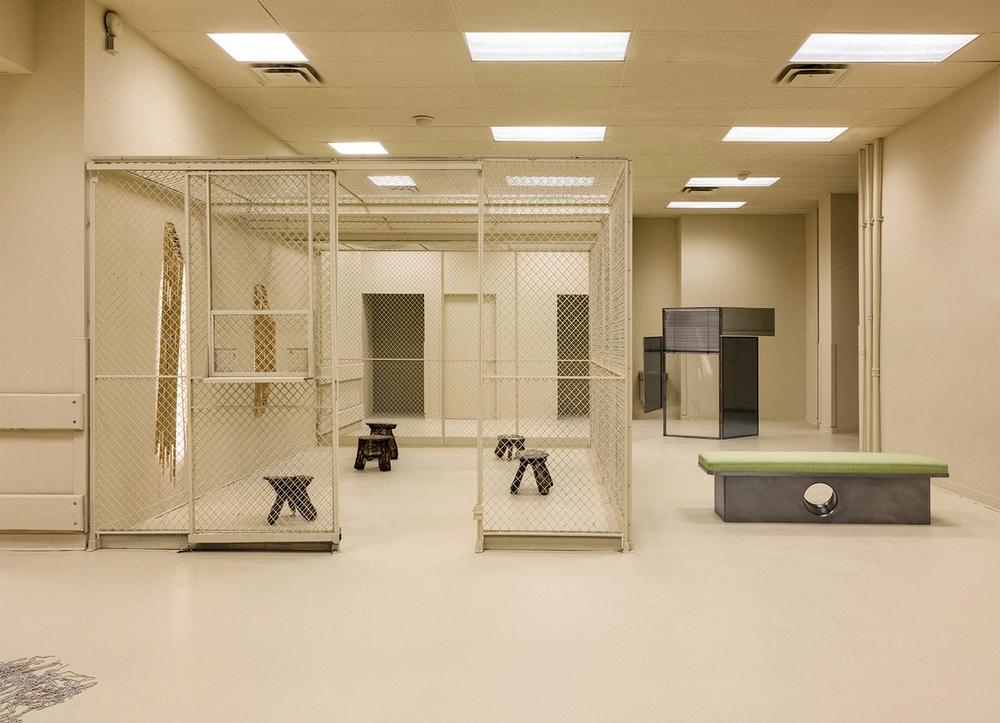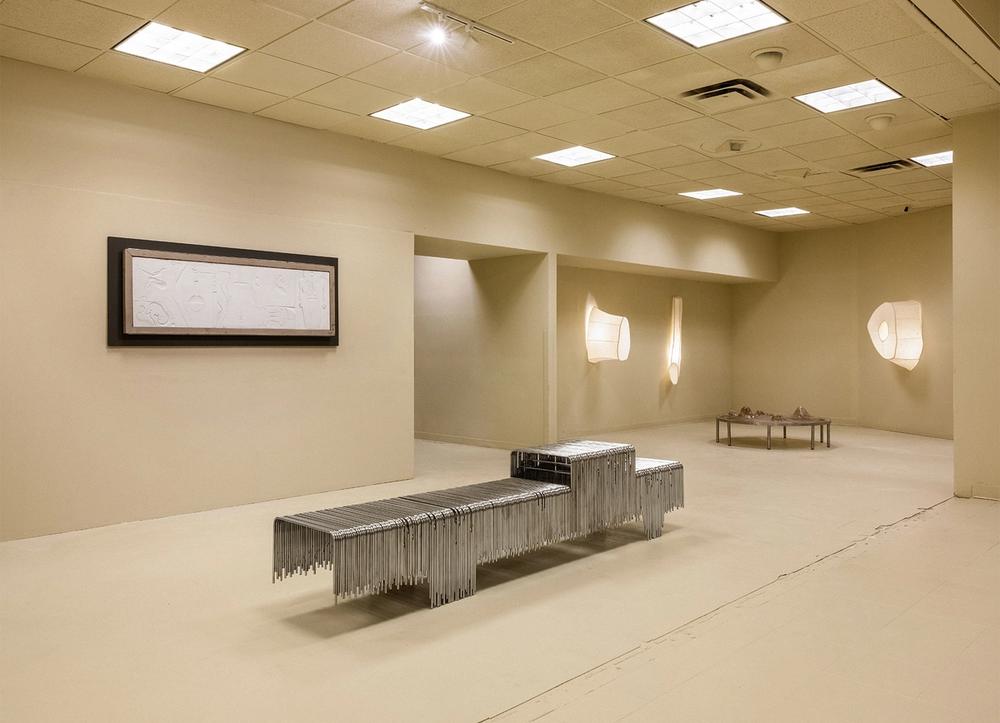Embracing Playfulness, an Exhibition Engages in the “Creative Porosity” Between Mexico and the U.S.
In 1938, two years after completing one of his first realized public artworks, “History Mexico,” a sculptural, colored cement mural on the second floor of the Abelardo L. Rodríguez Market in Mexico City, the Japanese-American artist and designer Isamu Noguchi, then 33 years old, won a public competition to create a frieze at the Associated Press Building (now called 50 Rockefeller Plaza) at Rockefeller Center in midtown Manhattan. Completed after a year of labor, the 20-foot-tall cast stainless-steel bas relief sculpture, called “News,” remains installed there today, above the main entrance. Depicting five larger-than-life, bulkily-armed, broad-shouldered, media-making men—one on the phone, the others writing, typing, observing, and picture-taking—it is a shining example of his early work. Considered together, these two pieces represent a young Noguchi building toward what would become an incredible output of poetic, boundary-pushing, public-oriented work across six decades, from playscapes and furniture to stone sculptures and Akari paper lamps (manifested perhaps most magnificently in the form of his namesake museum in Long Island City, Queens, which he founded in 1985).
Through much of this work, Noguchi would navigate his own dual identity (he was born in Los Angeles to a Japanese poet father and an American teacher, writer, and editor mother) and push beyond—defy, even—any preconceived borders between what might be called “art” and “design.” These explorations resonate and reverberate in “Intervención/Intersección,” a provocative, exquisitely arranged group exhibition that opens today and is on view through June 24 across three sites at Rockefeller Center: inside a former post office on the concourse level of 610 and 620 Fifth Avenue, atop the plaza’s famous flagpoles, and just outside of 30 Rockefeller Plaza. Organized by the roving Mexico City–based MASA gallery and curated by Su Wu, the presentation, MASA’s New York City debut, features a vast range of sensuous and spirited works by artists, architects, and designers who are Mexican or who currently live and work in Mexico, such as Pia Camil, Frida Escobedo, Héctor Esrawe (one of MASA’s co-founders), Pedro Reyes, and Rafael Prieto, alongside those of several canonical 20th-century figures—including, appropriately, Noguchi. The show’s aim? To capture a sense of “this history of creative porosity between Mexico and the U.S.,” Wu says, and to engage in “a rebellious spirit, where we can introduce fissures.”
Since its founding in 2018, MASA has brought a Noguchi-like mindset to its various projects, viewing itself less as a traditional gallery and more as a nomadic global platform for merging art, architecture, and design. (It has plans for upcoming exhibitions in the Hamptons, Paris, and Los Angeles, and has previously put together shows in Mexico City, Oaxaca, and Miami.) “I feel like MASA has always been rooted in this optimism that we could create a new sense of place, or that we could identify or highlight the shared affinities, shared longings, and shared concerns that can come to define a place better than strict citizenship or borders,” says Wu, who moved to Mexico five years ago from Joshua Tree, California, with her husband, the artist Alma Allen, whose sinuous, organically shaped bronze sculptures feature in the exhibition. Three of them appear next to, and in direct conversation with, a slim steel sculpture by Noguchi.
Forming the metaphorical beating heart of the show are two Noguchi models—one, of his undulating “Contoured Playground” (1941), an earthwork-playscape concept he created as a proposal for Central Park; another, of a little-known, rarely seen mural he made in 1937 that features imagery that relates to the artist Frida Kahlo, with whom he had once had a love affair. (The latter model even features a human heart among its carvings.) Conveniently, or perhaps intentionally—the show does indeed include many subtle adjacencies and curatorial winks—both models are geographically centered in the post office space, with the mural mounted on a wall squarely in the middle of it.
Expansive and expressive in its outlook, “Intervención/Intersección” could be viewed, in its entirety, as its own sort of “playscape.” In a perhaps literal interpretation of this idea, there are, adjacent to the “Contoured Playground” model, a trio of green twisted-steel sculptures by the artist and filmmaker Miguel Calderón, who took an everyday playground fixture—the seesaw—and transfigured it into something surreal and Dalí-esque. Nearby, sculptural copper pieces—a chair, a sculpture—by designer and artist Brian Thoreen (another of MASA’s co-founders), hand-hammered in the Michoacán town of Santa Clara del Cobre, similarly defy function. These would not appear out of place in a public park, and as with so many of Noguchi’s works, they invite curiosity, play, and even introspection. The show is full of such clever pairings, each piece conversing with the next and—in certain cases, as with an elegant, ribbon-shaped light fixture by Esrawe—with the building’s architecture.
Certain works in the exhibition intentionally engage with memory and history, functioning as potent mini-memorials. One is a piece by the artist and film producer Rubén Ortiz Torres, who kintsugi-ed the reflective, cosmic-colored hood of a lowrider car, repairing its many scratches, dings, and markings. Beyond being an eye-catching object, the work effectively creates constellations of metaphor and meaning. Its very surface is an abstracted mural. Another example is the sand-casted bronze “Memoria” stools (2017–2020) by Esrawe’s EWE Studio, which take traditional homemade artisan’s seats, imprinted with decades of daily wear by their users, and cast them in bronze, for posterity.
Collectively, “Intervención/Intersección” is an ode to to the fact that craft, art, and design, when harnessed properly, can transcend any one discipline, intersecting in a way that’s at once conceptual, functional, beautiful, highly tactile, indefinable, and—as is the case across all of Noguchi’s work—simply, wonderfully engaging.




